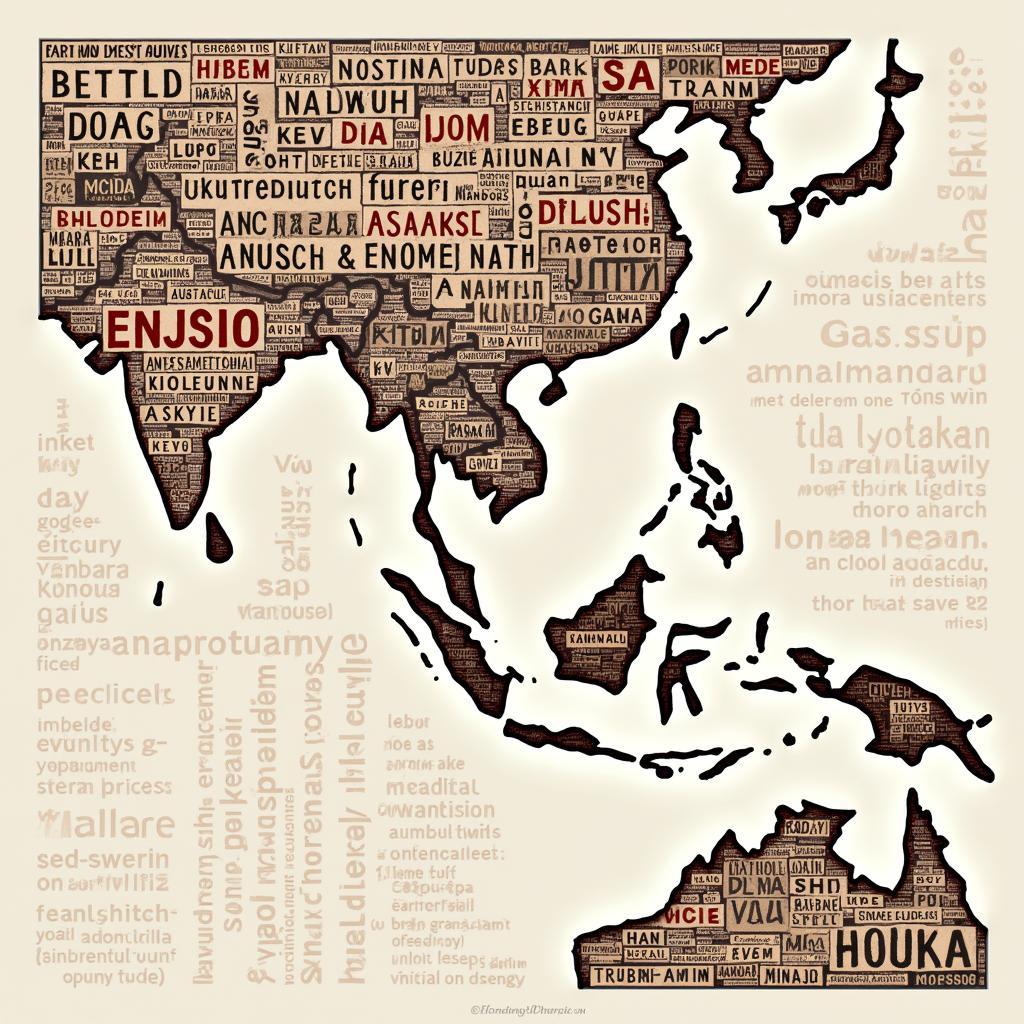The Indonesian phrase “Apa Yang Dimaksud Istilah Asing,” which translates to “what is meant by foreign term” in English, is a common query for those navigating the increasingly globalized world. This article will delve into the meaning and implications of foreign terms, exploring their impact on language, culture, and communication within Southeast Asia and beyond.
Defining “Istilah Asing” (Foreign Term)
An “istilah asing,” or foreign term, refers to a word or phrase borrowed from another language and incorporated into the lexicon of a different language. These terms often fill lexical gaps, representing concepts or objects not originally present in the borrowing language. The adoption of foreign terms is a natural linguistic process, reflecting cultural exchange and the evolution of language itself. Think of words like “internet” or “computer,” which have become ubiquitous across numerous languages.
Why Do We Use Foreign Terms?
Sometimes, a foreign term perfectly encapsulates a concept that’s difficult to express succinctly in the native language. Other times, it might be a matter of prestige or trendiness. For example, using a French culinary term might lend a certain air of sophistication to a restaurant menu.
 Foreign Terms in Southeast Asian Languages
Foreign Terms in Southeast Asian Languages
The Impact of Foreign Terms in Southeast Asia
Southeast Asia, a melting pot of cultures and languages, presents a fascinating case study for the adoption and adaptation of foreign terms. From Sanskrit and Pali influences in ancient times to more recent borrowings from European languages, the region’s linguistic landscape is rich with loanwords.
Examples of “Istilah Asing” in Indonesian
Indonesian, the national language of Indonesia, has borrowed extensively from various languages, including Dutch, Arabic, English, and Chinese. Words like “kantor” (office, from Dutch “kantoor”), “dunia” (world, from Arabic “dunya”), and “handphone” (mobile phone, from English) are everyday examples of integrated foreign terms.
Navigating the Challenges of Foreign Terms
While foreign terms can enrich language, they can also present challenges, particularly in understanding and communication. Mispronunciation, misinterpretation, and the creation of linguistic barriers are potential pitfalls.
How to Understand “Istilah Asing”
Context is key! Pay attention to the surrounding words and sentences. Don’t be afraid to consult dictionaries or online resources. Learning about the etymology of a word can also shed light on its meaning and usage.
“Apa Yang Dimaksud Istilah Asing” and the Future of Language
As globalization continues to accelerate, the exchange and adoption of foreign terms are likely to increase. Understanding the meaning and implications of “apa yang dimaksud istilah asing” is crucial for effective communication and cultural understanding in the 21st century.
Embracing Linguistic Diversity
While navigating the complexities of foreign terms can be challenging, it also offers an opportunity to appreciate the richness and diversity of human language. By understanding how and why languages borrow from each other, we gain a deeper understanding of how cultures interact and evolve.
Conclusion
“Apa yang dimaksud istilah asing” highlights the dynamic nature of language and the ongoing process of linguistic borrowing. Foreign terms enrich language, reflect cultural exchange, and connect us to a wider world. By embracing linguistic diversity and understanding the context in which these terms are used, we can navigate the challenges and reap the rewards of a globalized world.
FAQ
- What is the English translation of “apa yang dimaksud istilah asing”? (What is meant by foreign term)
- Why are foreign terms adopted into languages? (To fill lexical gaps, express complex concepts, or for prestige)
- How can I understand the meaning of a foreign term? (Consider the context, consult dictionaries, or research its etymology)
- What is the impact of foreign terms on Southeast Asian languages? (They reflect the region’s history of cultural exchange and linguistic evolution)
- What are some examples of foreign terms in Indonesian? (Kantor, dunia, handphone)
- What are the challenges of using foreign terms? (Mispronunciation, misinterpretation, and communication barriers)
- How can I learn more about the etymology of words? (Use online etymological dictionaries and resources)
Related Questions
- What are some common loanwords in Southeast Asian languages?
- How does language influence culture?
- What is the role of language in globalization?
For further assistance, please contact us: Phone: 0369020373, Email: aseanmediadirectory@gmail.com or visit us at: Thôn Ngọc Liễn, Hiệp Hòa, Bắc Giang, Việt Nam. We have a 24/7 customer service team.
